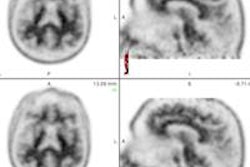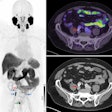Dear Molecular Imaging Insider,
This issue of the Insider offers a first look at a study on FDG-PET's ability to predict the likelihood of future adverse events in people with cardiac sarcoidosis.
The study from Brigham and Women's Hospital appears in today's issue of the Journal of the American College of Cardiology. Which two features on FDG-PET studies were predictors for death or life-threatening arrhythmia? Click here to find out.
In more cardiac news, we also have a story about 3D visualization software that fuses anatomical and functional data into a single image to make it easier to diagnose coronary artery disease. Called synchronized multimodal heart visualization (SMARTVis), the software is designed to take data from multiple cardiac imaging modalities and create 2D and 3D fused images with information on coronary stenosis.
And speaking of new innovations, start-up firm Brain Biosciences is hoping to ride the wave of interest in PET scanning for Alzheimer's and other brain diseases by commercializing its new CerePET system. CerePET is a portable PET scanner designed to offer more cost-effective neuroimaging than whole-body scanners. The system is still investigational, but you can learn about it now by clicking here.
PET imaging with the radiotracer florbetapir (also known as Amyvid) is an exciting new tool that could help determine which individuals are at risk of developing Alzheimer's disease, but reading the scans can be a challenge. As a result, Pennsylvania researchers enlisted a software application that helps boost reader agreement by calculating standardized uptake value ratios for the florbetapir PET images.
Also in the realm of software, check out this story on a computer-aided detection algorithm that uses anatomic data from MRI scans to help radiologists differentiate benign and malignant brain tumors on FDG-PET images. Researchers from Yamaguchi University in Japan developed the algorithm, which classifies tumors via image texture features on FDG-PET; it yielded 100% sensitivity and 80% specificity in a 24-patient study.
Be sure to stay in touch with the Molecular Imaging Digital Community on a daily basis to learn about the latest news and research.




















